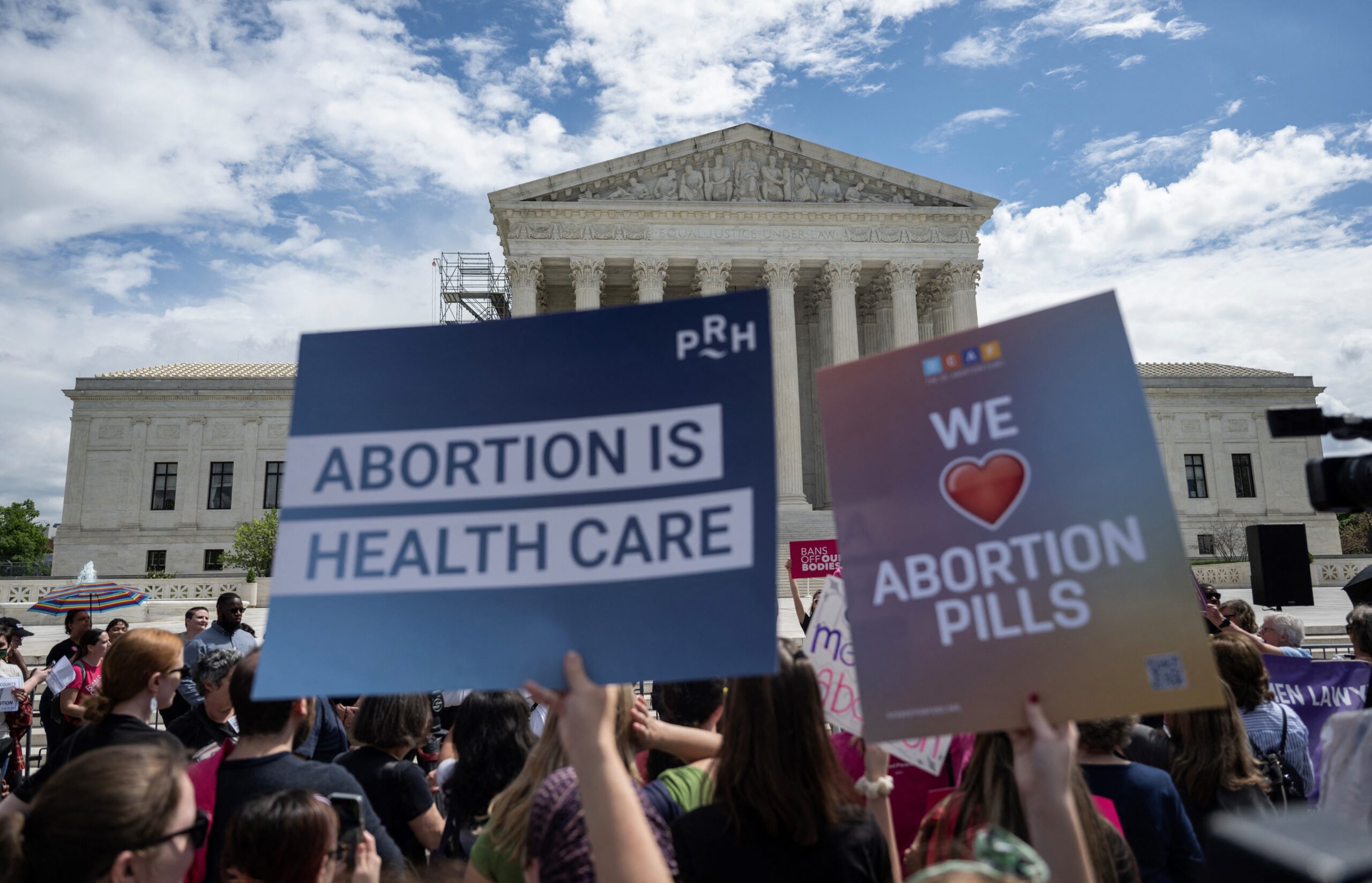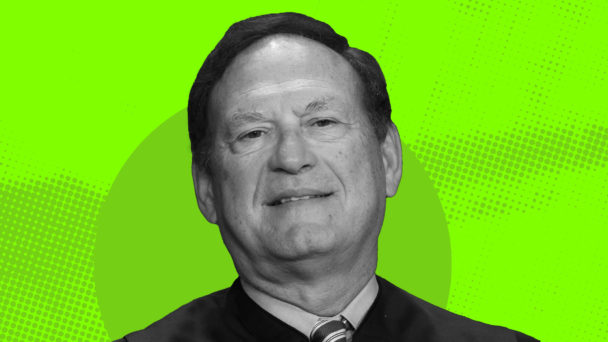Last month, the Supreme Court at last conceded that, yes, the justices are bound by a code of ethics—and did it in the most passive-aggressive way possible. The code, they said, “largely represents a codification of principles that we have long regarded as governing our conduct,” and was necessary only to dispel the “misunderstanding” that the justices “regard themselves as unrestricted by any ethics rules.”
Of course, the public’s “misunderstanding” is the product of a raft of recent stories detailing how the conservative justices taking their rights away are also unethical actors (who could have known?) accepting money and gifts from billionaire donors without recompense. As has already been discussed in countless articles, their code of conduct is toothless—it asserts that justices “should not” allow financial relationships to influence their decision, but contains no accountability mechanisms to prevent them from doing so. Nevertheless, the justices’ formal admission that they’re seen as unaccountable represents a significant development in the Court’s legitimacy crisis: Public pressure is working.
These scandals have kept the Court under a spotlight for much of this year, but Americans have had growing concerns about the Court’s integrity for much longer—since last May, in fact, after the leak of the draft majority opinion in Dobbs v. Jackson Women’s Health Organization, which overturned Roe v. Wade and eliminated the right to abortion care. After the conservative supermajority demonstrated its willingness to take away fundamental rights, the public understood that the highest court in the land might have an accountability problem—and according to the numbers, no one understands that accountability problem better than women.

(Photo by OLIVIER DOULIERY/AFP via Getty Images)
While these are similar questions, it’s an important distinction. The Court’s favorability will drop after a particularly egregious decision. But when Americans lose faith in the Court to make the right decisions—whether through ethics scandals or out-of-touch rulings—it poses a more existential threat to the institution. The less confident people are that the Supreme Court will safeguard their rights, the more they’ll embrace reforms to try and restore that balance.
Unsurprisingly, Dobbs severely damaged the Court’s favorability. Following the decision to overturn Roe, the Supreme Court was viewed unfavorably for the first time in Navigator’s history, with women, those under 35, and liberal Democrats driving that decline. Between February 2022 and June 2022, shortly after the Dobbs opinion was published, the Court’s favorability rating plunged a net 26 points. Over a year later, the Supreme Court is underwater among all Americans, but women view the Court even less favorably than men: It has a 10-point deficit among women, while men are almost evenly split.
Where we really see a stark difference between men and women today is on the question of trust. While the majority of men trust the Supreme Court, 59 percent of women don’t trust the Supreme Court to make the right decisions going forward.
It’s easy and tempting to attribute all of this difference to Dobbs. The Court made a decision that disproportionately harms women; women, in turn, think the Supreme Court sucks eggs. But women were leading public distrust of the Supreme Court even before the Dobbs decision. Prior to the leak, 68 percent of men said they trusted the Court; only 54 percent of women said the same. For women under 55, trust in the Court was already underwater by a slim margin.
It isn’t hard to understand why. Ever since Mitch McConnell denied Democrats the chance to replace Justice Antonin Scalia in 2016, Americans have watched in horror as the ideological balance of the Court has swung sharply to the right. In 2016, the Court was roughly balanced between liberals and conservatives; by 2022, the confirmations of three Trump-appointed justices yielded the most conservative Court in nearly a century. Why would younger women have faith in the Supreme Court when, for their entire lives, Republicans have promised to use it as the vehicle to take their rights away? The end of Roe confirmed the fears that women have always had: this Court exists primarily as a rights-denying body.
Our polling from July of this year confirms this. By a 28-point margin, a majority of women say that the Court is “making decisions that take away my freedoms,” compared to only 23 percent who say that the Court is “making decisions that protect my freedoms.” Similarly, 64 percent of women agree that “the Supreme Court is increasingly corrupt and losing the confidence of the American people.” But among men, just 52 percent agree that the Court is increasingly corrupt; the remaining 48 percent say it is doing its job “independently and fairly.”

(Photo by ANDREW CABALLERO-REYNOLDS/AFP via Getty Images)
It’s important to evaluate the recent ethics scandals surrounding the conservative justices in this context. If this Court is weighing which of your rights to cut every year, it matters a lot whether those justices are more beholden to money. Here, too, the concern gap between men and women is stark: Women found the corruption allegations concerning by 64 points, compared to 43 points among men. Men are even less preoccupied with the substance of the Supreme Court’s work: Barely half are concerned that “the Supreme Court is rolling back crucial freedoms,” compared to seven in ten women. It’s easy to be less worried about the Supreme Court’s war on freedom when your freedoms aren’t under attack.
There’s plenty of room for this trust gap to grow. The Court is already considering whether you’re constitutionally protected from being shot by a domestic abuser, and in all likelihood will soon hear cases about gender-affirming care and medication abortion. Set the outcomes aside: Even if the Court decides to protect these rights, the fact that these are even questions before a body of unelected, ethically-compromised conservatives is enough to undermine faith in the institution.
Just as women are especially concerned about this Court, they’re also especially unified behind potential reforms. For example women are more likely than men to support term limits for justices, congressional investigations into ethics violations, and other similarly strict disclosure reforms. If the Court thinks people will stop being mean to them just because they announced a performative list of suggested behaviors, they severely misunderstand how angry people get when their rights no longer exist.
The adoption of the paltry code of conduct shows that public pressure on the Supreme Court is working. But for the Court to regain the public’s trust, Congress must step in and reform it, instead of waiting for the Court to erode more rights before doing so.




